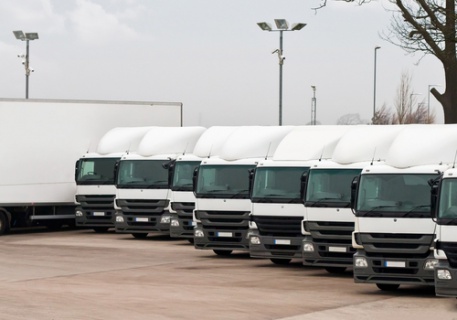
From addressing driver fatigue to tackling maintenance needs, companies are turning to Web technology to optimize the use of their fleets. The benefits are far-reaching. Cutting costs is one, not to mention enhanced performance, service and security.
Saia LTL Freight Inc. is one company that is jumping on board to the potential of digitization within fleet management. The firm has been using sensors to monitor fuel performance and other engine performance indicators on its fleet of 3,000 trucks for some time, but the system wasn’t Internet enabled and data was collected intermittently. When trucks arrived back at shop for maintenance, analysts would plug a cable directly into the engine and download the results; a process that happened at best monthly, according to The Wall Street Journal. Seeing an opportunity, the company deployed technology designed by Intel and a program developed Vnomics Corp. that uses an antenna and on-board computer to send updates on the vehicles location, fuel economy and engine diagnostics directly to Saia engineers in real-time.
In the first 12 months, the company saw fuel efficiency increase 6 percent, amounting to savings of $15 million that the company says paid for the program. “It used to be, in our industry, for us to find out what happened with a driver and with a vehicle we had to wait for them to come back to the office,” Brian Balius, Saia VP of transportation, told the newspaper. “Now we can see these things happening all day long—as they occur.”
A report from DHL and Cisco predicts that by the end of the decade some 50 billion objects will be connected to the Internet. But it’s not just machine-to-machine communication that is shaping the increasingly connected world.
Drowsy and distracted driving is a serious concern for fleet managers and drivers working hard to deliver goods on time. New networked tools hope to eliminate the problem. After more than eight years of testing, Australia-based Seeing Machines’ fatigue monitoring system is ready for widespread use in North America. The system utilizes sensors and cameras, which monitors facial and eye movements of the driver. If a potential problem is detected, an alert sounds in the cab and a notification is sent in real-time to a central call center. According to the company, the call center will notify the fleet within two minutes of receiving a warning, which will allow fleet managers to take action.
To date, the company has shipped 4,000 units worldwide and have reported users seeing a 71 percent decrease in distraction-related driving events. Erica Collins, general manager-fleet support for Seeing Machines, told FleetOwner companies that combining the fatigue monitoring system with a fatigue management program has produced the best results. Eventually, the company plans to add a front-facing camera to capture road conditions, giving fleets that much more data.
A major benefit of the industrialization of IoT is operational savings—in time, money, energy and efficiency. Networked communication streamlines the data gathering process into an actionable central hub assessable from anywhere there’s Internet access. Despite successes, overall adoption of IoT systems remains low. Security concerns continue to be an issue that holds some companies back. Businesses, particularly small-to-medium sized enterprises, are worried is their information is safe in the cloud. A data breach could be disastrous.
“In order to make [the Internet of Things] valuable, you have marketing, finance and IT all interacting with data,” Mark Thompson, director at KPMG’s cyber security practice recently told the Guardian. “IT can create the best network in the world, but when an organization is sharing information between departments, there is always the chance that something can go wrong.”
Finding ways to minimize and eliminate these threats will be essential to the mass adoption of IoT in the business sector. Europe has already begun laying the groundwork for regulations that would fine companies in the event of a breach.
The Internet of Things is expected to generate $1.9 trillion in economic value in the supply chain and logistics sector over the next 10 years. With fleet remaining a crucial aspect of supply chain management – businesses’ need for product delivery has yet to be completely replaced by innovation – the industry stands to make a major profit by embracing the high-tech tools emerging on the market today.